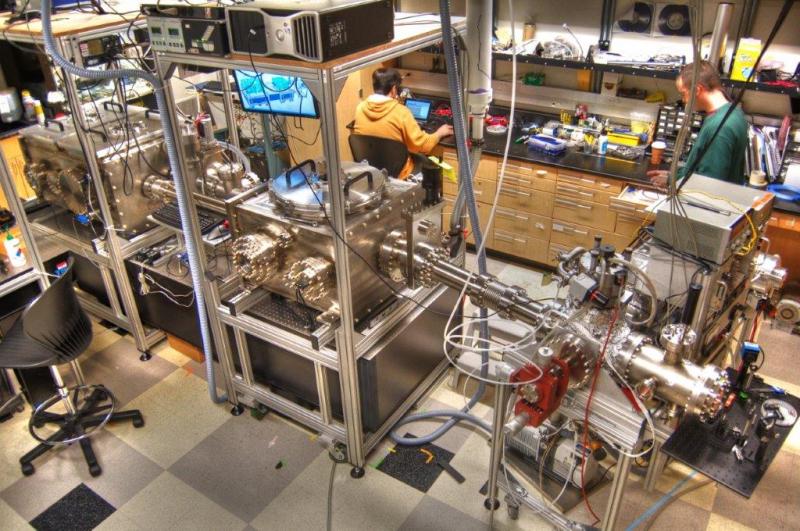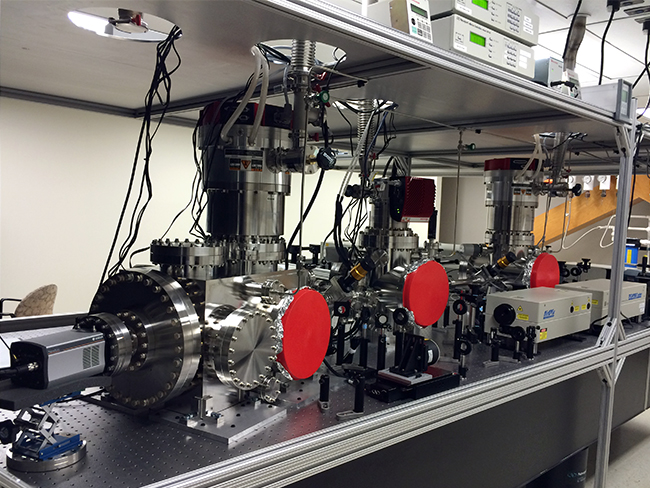NSF Establishes A National Ultrafast Facility at OSU

The National Science Foundation announced the funding of an ultrafast facility at Ohio State. The OSU facility is 1 of 9 grants awarded through the $90 million dollar NSF mid-scale infrastructure initiative.“These awards represent the first in NSF’s agency-wide effort to support the mid-range infrastructure that will be invaluable to strengthening the U.S. scientific research enterprise,” said Jim Ulvestad, National Science Foundation chief officer for research facilities. “The funded projects include an impressive collection of new design efforts and advanced instrumentation. These projects fill gaps and provide unique research capabilities for the U.S that will engage many early-career scientists and engineers in the pursuit of ground-breaking discoveries.”
The Mid-scale Research Infrastructure initiative was first proposed as part of the NSF’s list of 10 “Big Ideas” released in 2016, and inaugural funding for the program began this year. The OSU facility will be open to scientists from around the nation and world and bridges the gap between standard lab-based research and high-end facilities that few scientists have access to — a “sweet spot for science and engineering.”

An Attosecond Beamline Endstation in the DiMauro Lab at the Physics Research Building.
National Extreme Ultrafast Science Facility
The heart of the new National Extreme Ultrafast Science Facility (NEXUS) at Ohio State will be a one-of-a-kind ultrafast laser that delivers a kilowatt of power – roughly 200 times more powerful than a typical ultrafast laser. This will be the first such laser installed in the United States. The NEXUS laser can produce Extreme Ultraviolet (XUV) and soft x-ray light using a nonlinear process. The XUV light then allows researchers to study how electrons move in molecules and solids at unfathomably small time scales and spatial resolutions. While most XUV light sources create pulses at a repetition rate of 1,000 per second, this kilowatt laser will deliver the same pules at a rate of 100,000 per second. “This will allow us to get the same quality of data in 1/100th of the time; experiments that take us a week can now be completed in less than an hour,” said Robert Baker, associate professor of chemistry and biochemistry and principal investigator of the NSF NEXUS project.

One of Ohio State's current lasers, an extreme ultraviolet spectrometer, at Celeste Lab.
Scientific challenges to be addressed by the equipment include capturing and converting solar energy and mastering information transport on the atomic scale to create new quantum information technologies.
“Both of these goals require being able to control how electrons move,” Baker explained. “We’re targeting measurements that can have time resolution down to the attosecond — a billion billionth of a second — and spatial resolution down to an angstrom, which is about the size of an atom.”
Fun fact: An attosecond to a second is what a second is to roughly the age of the universe (14 billion years).
“We’re really trying to push the limits of what we can measure,” Baker said.
NEXUS will be located in Celeste Laboratory. and managed by the Institute for Optical Science (iOS). Baker and iOS Director and Physics Professor Louis DiMauro will serve as co-directors of the facility, which requires some renovation to ensure a temperature- and humidity-controlled lab space with next-to-nonexistent vibration. The laser is expected to be up and running within three years.
Ohio State was selected for NSF NEXUS both for its proven infrastructure capabilities and its leadership in ultrafast technologies. In addition to Baker and DiMauro, the project includes: Jay Gupta and Roland Kawakami (Physics) and Claudia Turro (Chemistry). Operation of the facility will include the addition of new technical staff.
“Once it’s built it will be managed here, but it’s really for the benefit of the whole scientific community,” Baker said. “It is an honor, as well as a big responsibility, that the NSF has selected Ohio State to be the host site for this historic award.”
